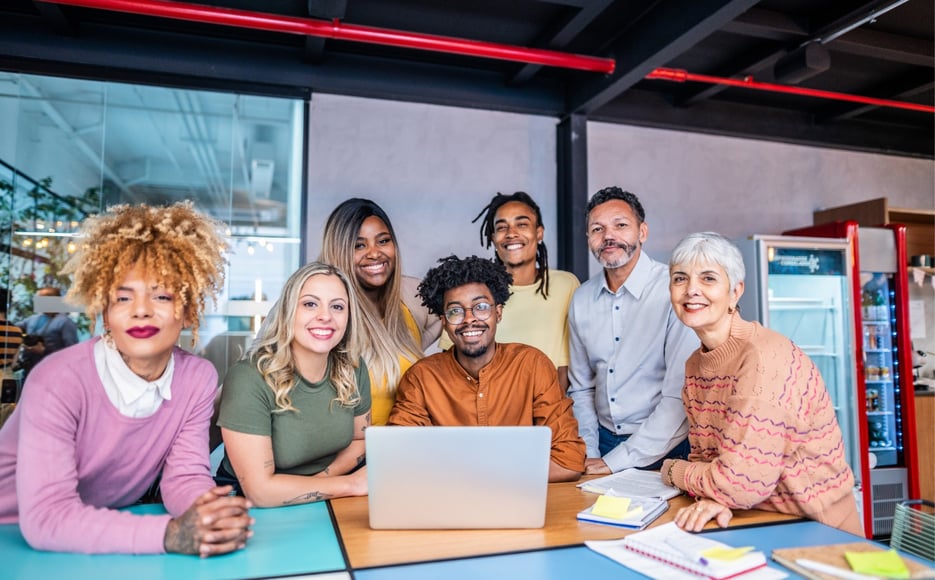In today's diverse workplace, fostering an environment where everyone feels respected and valued is crucial. Those in the LGBTQI+ community are not the only ones responsible for fostering such an environment. All organisation members should be involved in developing, facilitating, and maintaining an inclusive workplace.
LGBTQI+ Inclusivity in the Workplace
Understanding LGTBQI Needs and Concerns at Work
How to Promote Inclusivity for the LGBTQI+ Community
1. Celebrate and Recognise
- Sydney Gay & Lesbian Mardi Gras: February
- Transgender Day of Visibility: 31 March
- LGBTQ Domestic Violence Awareness Day: 28 May
- International Day Against Homophobia Biphobia and Transphobia: 17 May
- LGBT Pride Month: June
- International Non-Binary People’s Day: 14 July
- Wear It Purple Day: 28 August
- Bi Visibility Day: 23 September
- International Lesbian Day: 8 October
- National Coming Out Day: 11 October
- Asexual Awareness Week: October
- Intersex Awareness Day: 26 October
- Transgender Awareness Week: 2nd week of November
- Transgender Day of Remembrance: 20 November
2. A Non-Discrimination Policy
3. Using Inclusive Language
Pronouns
Some people identify themselves with more than one pronoun, such as she/they or he/they. Using someone’s correct pronoun(s) shows respect and portrays a sense of inclusion. Sharing pronouns can make a big difference in the inclusion of trans and gender-diverse people and can signal colleagues that they understand and respect pronouns. This can be done by wearing a pronoun badge, introducing yourself with your pronoun/s, or adding your pronoun/s to your email signature.
Language
Using people-centric language that focuses on the person and reflects people's individuality means avoiding classifying or stereotyping anyone based on their association or identity with a group or culture. It means not excluding people or making people feel invisible by language choice, which includes expressions that disparage or trivialise a person. For example, opt for inclusive language such as ‘partner’ (not ‘boyfriend’ or ‘girlfriend’) to refer to someone’s significant other.
The following are examples of exclusive language that assumes people are either male or female and they choose their sexual orientation: guys, ladies and gentlemen, both male and female, mum and dad, husband and wife, and sexual preference, among others.
To start, ensure all corporate and internal communications are using inclusive and respectful language. Ensure diverse representation at all levels of a large organisation, in corporate materials, on the website and social media, and in marketing campaigns and products or services.
4. Gender Neutral Workspace
5. Staff Education and Training
While most employees want to treat colleagues respectfully, they may not know what to say or do. Altius Group has a Diversity and Inclusion Committee. The Diversity and Inclusion (D&I) Committee is a committee of Altius Group team members from across the country. The Committee provides a forum for developing high-level advice to Senior Leadership Team members on all matters of significance related to diversity and inclusion issues that impact service provision, outcomes, and the reputation of the Altius Group. The D&I Committee has three Pillars of Purpose:
- Education
- Policy
- Celebration
Reminding staff of what discrimination looks like and how they can act inclusively can go a long way in providing an inclusive environment.
6. Regular Reviews
Providing a safe, inclusive workplace is not a set-and-forget system. Even if the organisation made extensive changes six months ago, the organisation may no longer be considered inclusive. The process must be ongoing, and one way to keep the system alive is through employees' feedback as an anonymous or identified staff member. Altius’ organisational consultancy teams conduct regular D&I audits to triage feedback and ensure it is acted on.
Remember, management and staff in an organisation can’t be expected to know it all. Organisations such as Altius Group can provide the expertise to help review the actions taken and provide organisational development, advice, and recommendations. We have assisted hundreds of organisations across Australia in a variety of industries to become more inclusive and know which strategies have the greatest impact. Having expert assistance available can provide staff members of an organisation with confidence and reassurance that they’re on the right path to a more inclusive and safe working space.
Contact us here, or call 1800 258 487 for more information.






